Handmade Ottoman Miniature Painting / Suleyman the Magnificent Etsy
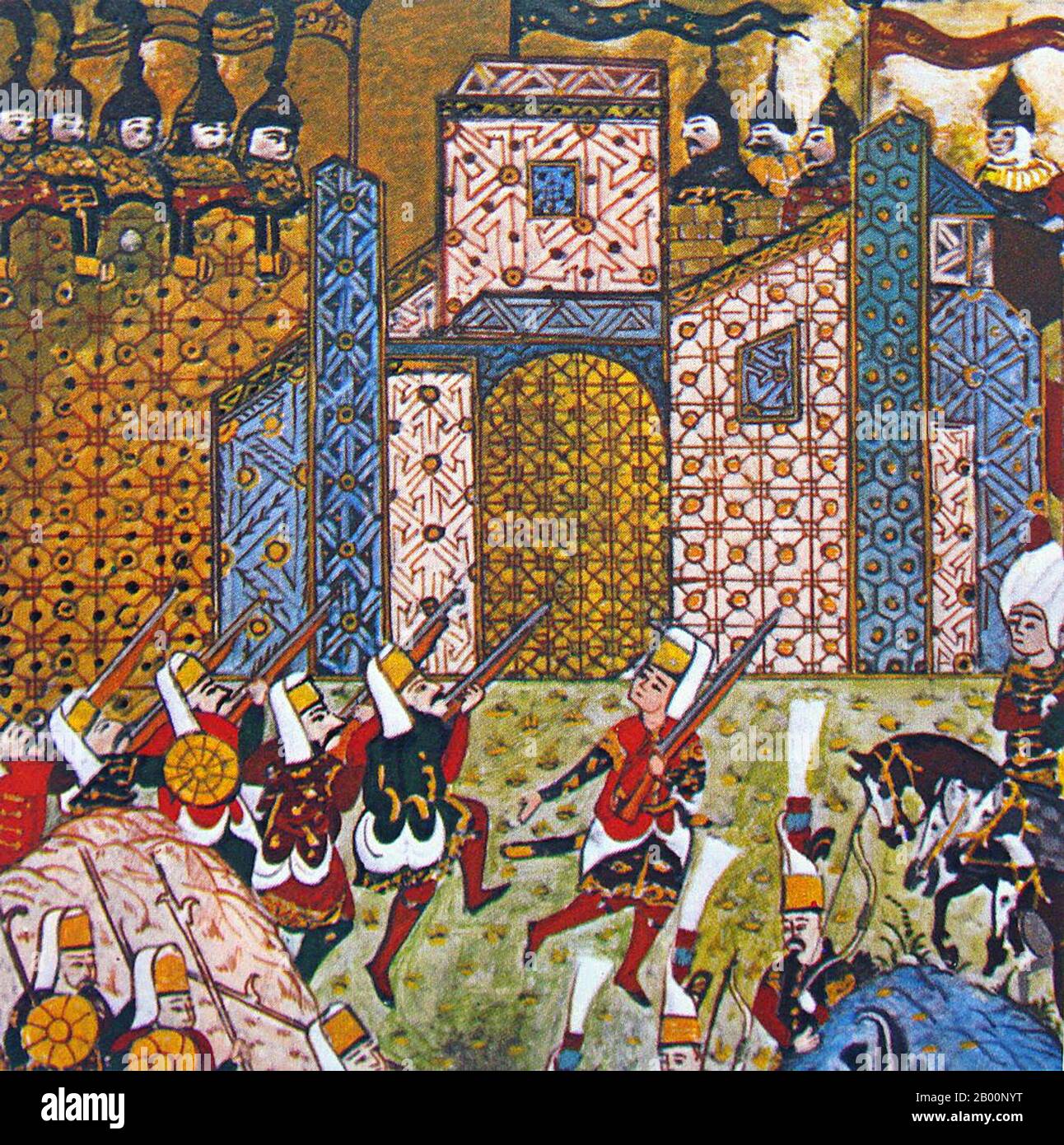
Janissary suleiman hires stock photography and images Alamy
Ottoman miniature painting was usually used to illustrate manuscripts or in albums specifically dedicated to miniatures. It was heavily influenced by Persian miniature painting, with additional elements of the Byzantine tradition of illumination and painting and Chinese artistic influences.

Handmade Ottoman Miniature Painting / Antichristdeccal Etsy
Abdullah Buhari was an 18th-century Ottoman court miniature painter. He is often described as the most important Ottoman artist of his period. [1] [2] Abdullah Buhari was known for making portraits of women, specializing in female figures and floral still-life. [3] He also had an innovative approach to creating three-dimensional paintings which.

This is How Ottoman Miniature Art Had a Great Influence on Documenting History Mvslim
Nakkaş Osman (often known as Osman the Miniaturist) was the most important miniature painter of the period, while Nigari developed portrait painting. Matrakçı Nasuh was a famous miniature painter during the reigns of Selim I and Suleyman the Magnificent. He created a new painting genre called topographic painting.
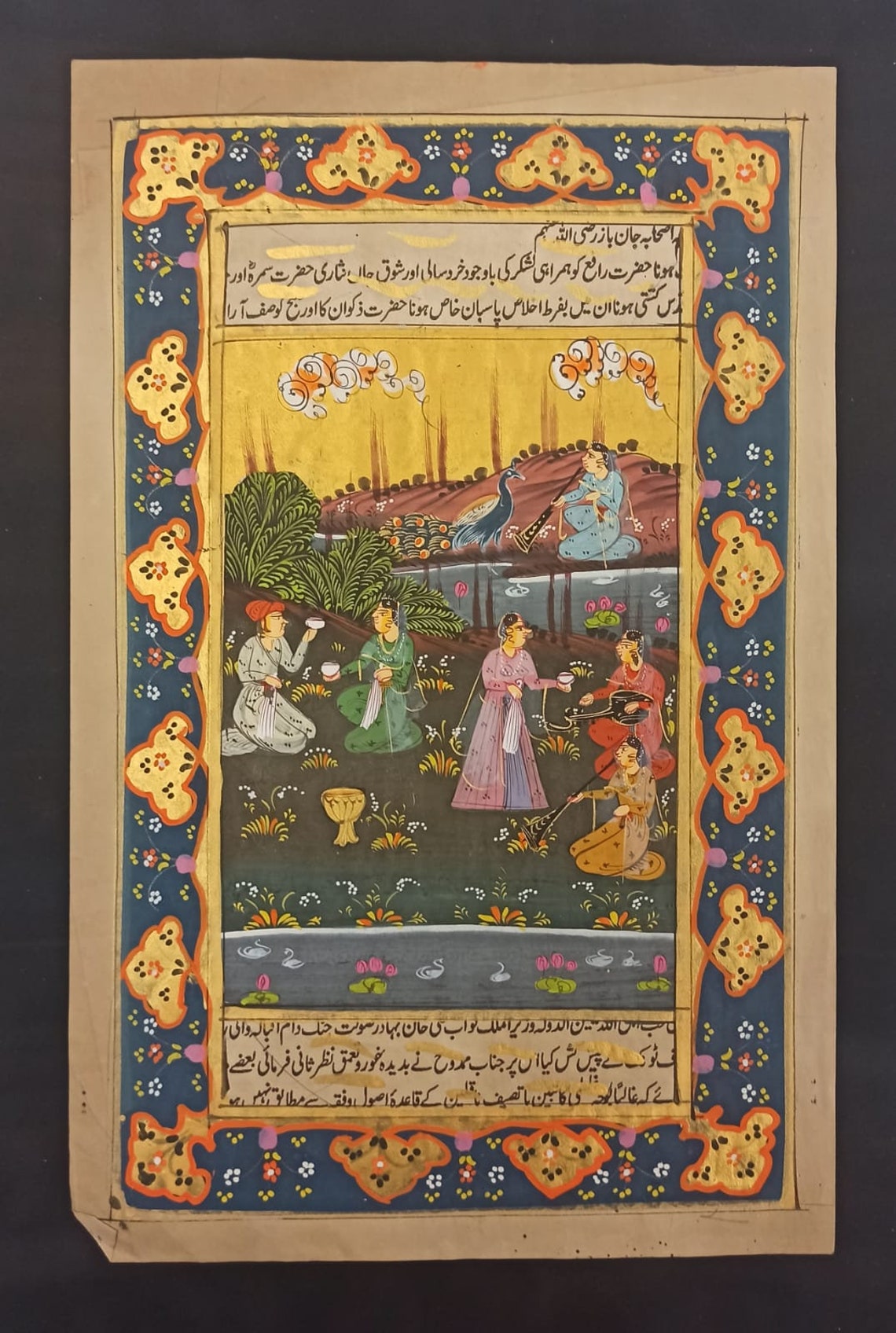
Original Ottoman Turkish Miniature Painting ArtMiniature Etsy
Ottoman Miniatures A distinctive feature of Ottoman miniature is that it portrays actual events realistically yet adheres to the traditional canons of Islamic art, with its abstract formal expression.Nearly all these paintings are concerned with important events of the day, such as Turkish victories, the conquest of fortresses, state affairs, festivals, formal processions, and circumcision feasts.

Handmade Ottoman Miniature Painting /Turkish Bath Hammam Etsy
Wall Art, Ottoman Miniature Paint, Handmade, High Art, Unique, Original, German Fountain (1) $ 443.02. FREE shipping Add to Favorites Original Ottoman Women Miniatures, in 17.century ,Watercolor painting,19*12 cm,2,94*1,86 inches $ 75.00. FREE shipping Add to Favorites.

109 best Ottoman Miniature Art images on Pinterest Islamic art, Ottoman empire and Ottomans
Ottoman miniature painting does not compare in quality to Persian painting, which originally influenced the Turkish school. Yet Ottoman miniatures do have a character of their own, either in the almost folk art effect of religious images or in the precise depictions of such daily events as military expeditions or great festivals.

Handmade Ottoman Miniature Painting / Suleyman the Magnificent Etsy
It was during the Seljuk era that miniature painting attained the stature of national art. It was during this period that Nakishane (schools of embroidery) were established. An exchange of miniature artists about the same time between Turkey and Iran further influenced these arts in both countries. The Ottoman style in miniatures made itself.
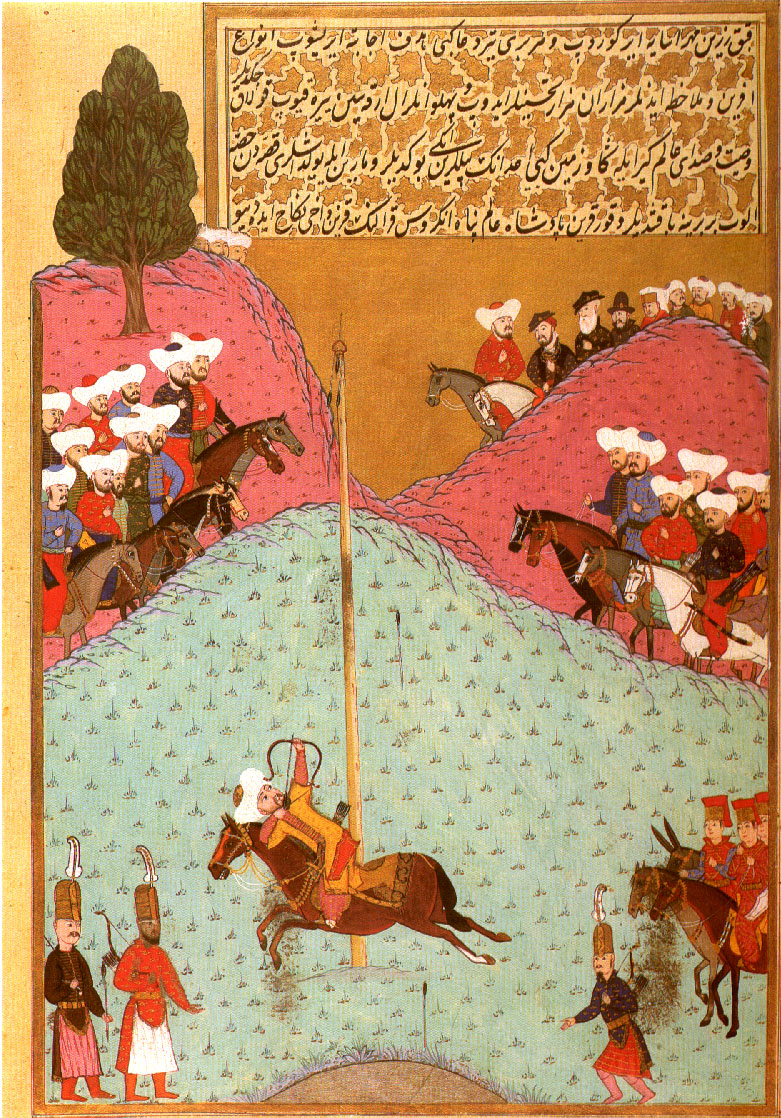
Ottomans religious painting
The portraits of the Ottoman sultans were also an important theme for the miniature art. This art form only began after the conquest of Istanbul. I therefore visited the historical museum in Istanbul. Within the Historical Museum from 1453 you can see an enormous panoramic painting depicting the capture of the city by the Ottoman Empire.
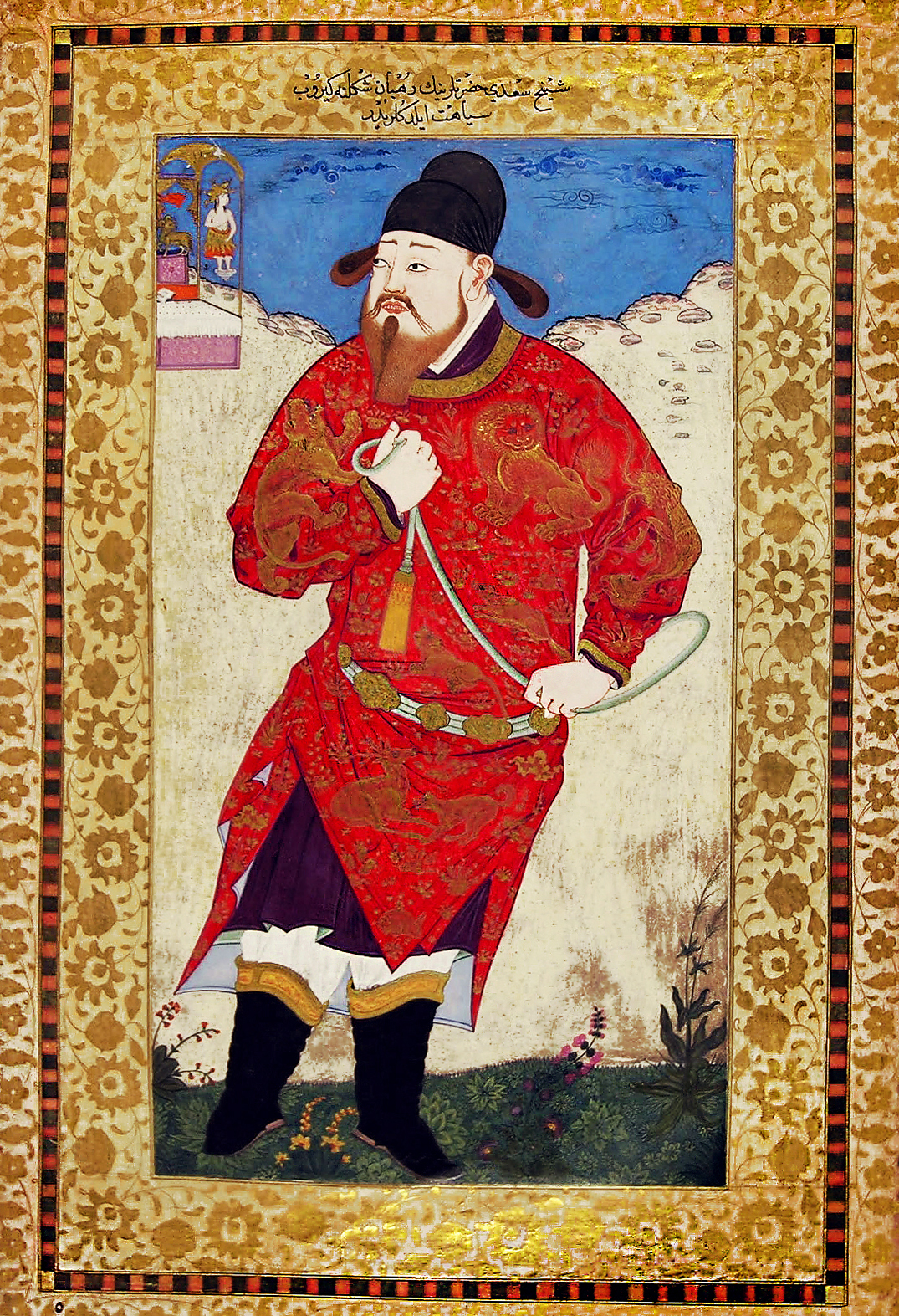
Ottoman Miniature Depicting Man Dressed as a Chinese Official, 17th Century 奥斯曼细密画,中国官员17世纪
The most characteristic examples of Ottoman miniature art were produced in the second half of the sixteenth century as a result of the patronage of Sultans Selim II (1566-74) and Murad III (1574-95). The reigns of these sultans mark the classical period of Ottoman miniature art and the most productive era in historical painting.

Handmade Ottoman Miniature Painting / Preparations of Campaign Etsy
Browse 12 ottoman miniature painting photos and images available, or start a new search to explore more photos and images. Nautical Festival before Sultan Ahmed III from 'Surname' by Vehbi, c.1720. Nadr ibn al-Harith had repeatedly mocked the Prophet Muhammad and the Qur'an. The miniature comes from a six-volume edition of the Life of the.
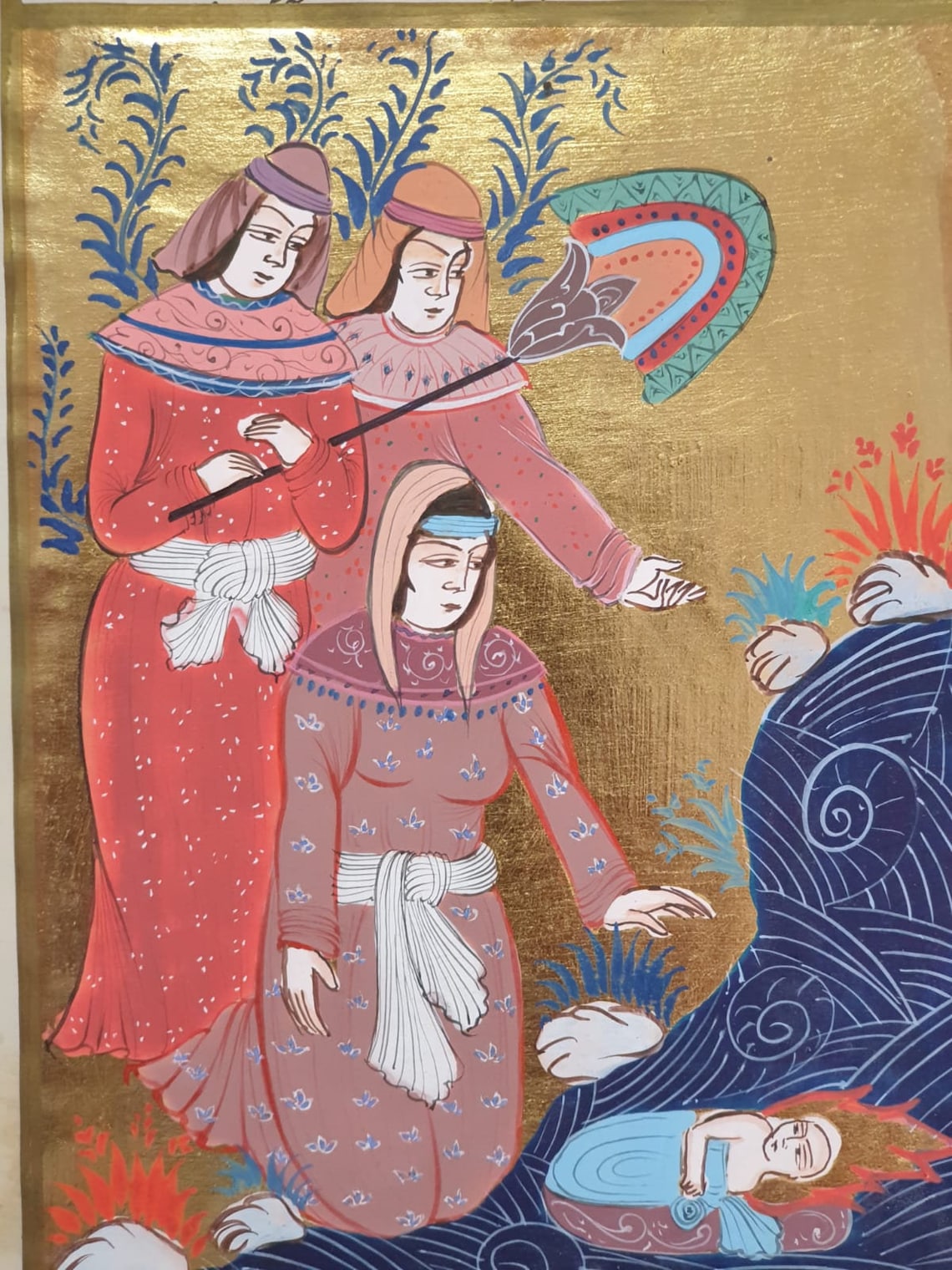
Original Ottoman Turkish Miniature Painting Artminiature Etsy
The word miniature is derived from western languages. During the Ottoman period this word has been replaced by 'imagining' or 'embroidery'. It was really very odd to see that illustrations of humans were seen as Islamic art. Apparently in the Islamic culture "monumental painting" was only found in the Umayyad period.
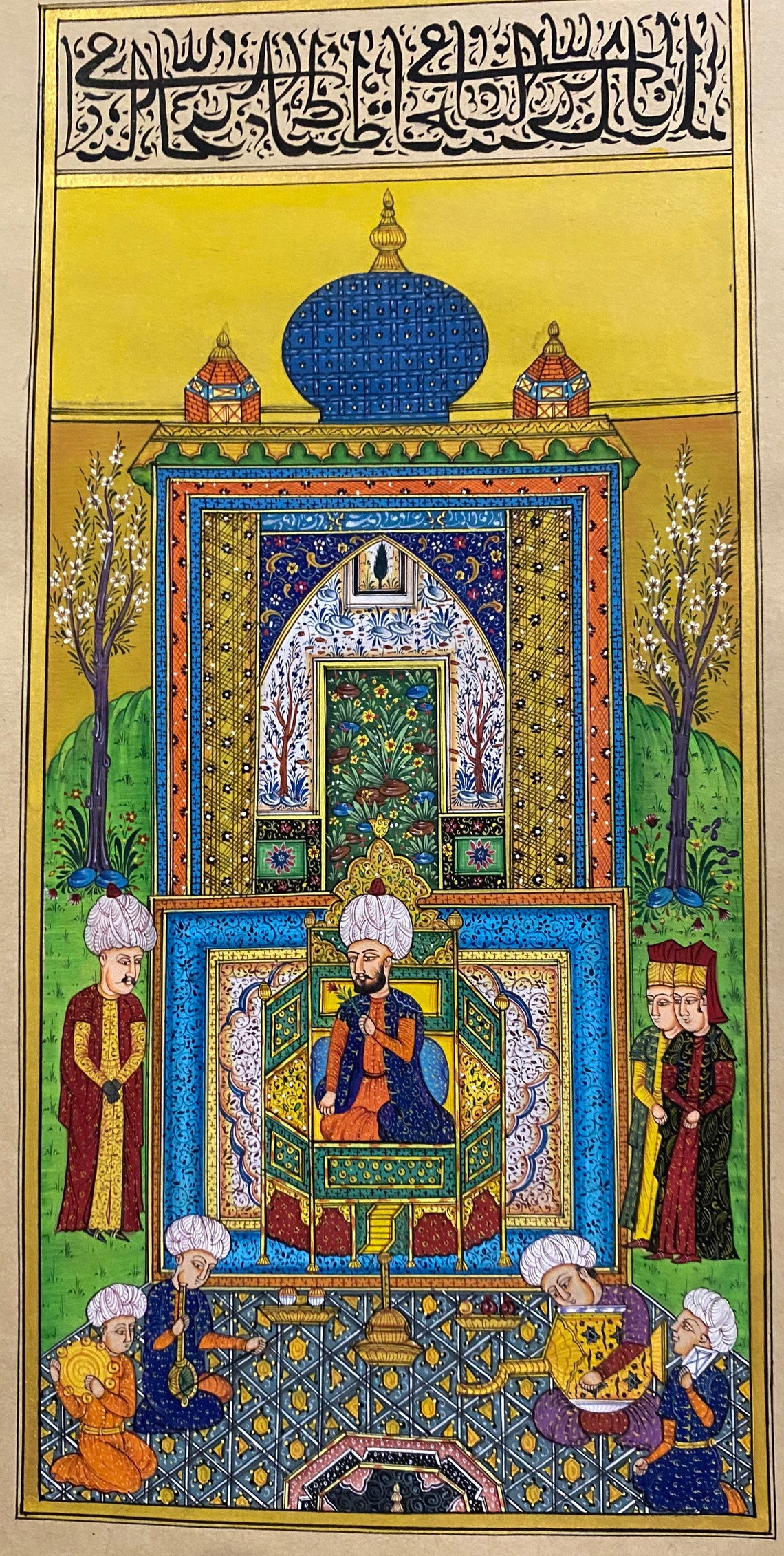
Handmade Ottoman Miniature Painting / Suleyman the Magnificent Etsy
With the changes made under the rule of Suleiman the Magnificent, Turkish miniature art was separated from the Islamic miniature art with conquests, military expeditions, accessions, hosting foreign ambassadors, holiday celebrations and other important occasions, painting historical events becomes a professional position called şehnâmecilik. With the rise of the westernization movement in.

Handmade Turkish/ottoman Miniature Painting on Islamic Etsy
After a period of crisis in the beginning of the 20th century, miniature painting was accepted as a "decorative art" by the intellectuals of the newly founded Turkish Republic and in 1936, a division called "Turkish Decorative Arts" was established in the Academy of Fine Arts in Istanbul, which included miniature painting together with the other Ottoman book arts.

. Female musical players. Ottoman miniature painting from the Surnamei Vehbi. Kept at the
Check out our ottoman miniature painting selection for the very best in unique or custom, handmade pieces from our role playing miniatures shops.

Handmade Ottoman Miniature Painting /acceptance Ceremony Etsy
3 OF 4. Ottoman Miniatures. The conquest of Istanbul was the first step into a new phase of the Ottoman cultural life. The characteristics of the period in the field of paintings and miniatures may be summed up as the meeting of the eastern and western painting schools, as the widespread interaction and communication and as the widespread.

Original Ottoman Turkish Miniature Painting ArtMiniature Etsy
the tradition of Ottoman miniature painting makes its initial appearance during these years. Manuscript productivity in the follow-ing period, under Bayezid 11 (1481-1512), is far more extensive with close to a dozen illustrated works, half of which are dated. The 1525 document also lists several artists as having been employed by Bayezid II al-